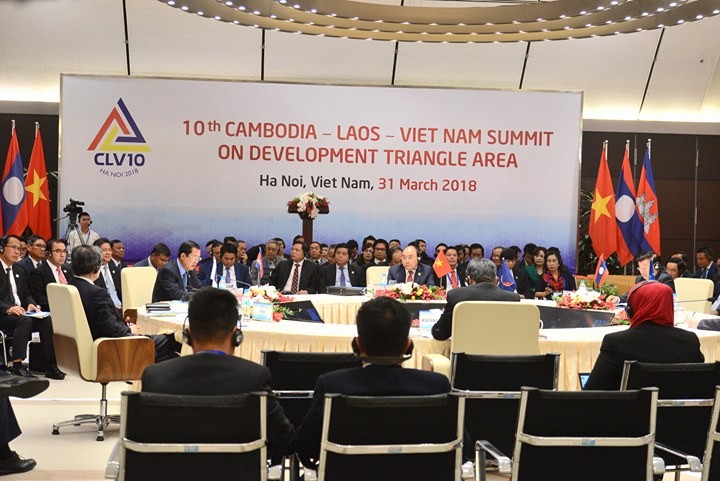(VOVWORLD) - The success of the 6th Greater Mekong Subregion Summit (GMS-6) and the 10th Cambodia-Laos-Vietnam Development Triangle Area Summit (CLV-10) was important for Vietnam and other countries in the region. Agreements adopted at the two summits have set a direction for future cooperation and demonstrated a commitment to creating an integrated, prosperous, and sustainable Mekong Subregion.
Important agreements will shape region’s future development
At the GMS-6, leaders agreed on key cooperative orientations for mid-term development and began to build a long-term cooperative vision. The summit adopted a Joint Statement, a Hanoi Action Plan for 2018-2022, and a Regional Investment Framework for 2022 containing a list of 222 projects worth about 65 billion USD.
Vietnamese Prime Minister Nguyen Xuan Phuc: “The summit’s success has strengthened the unity of GMS countries and set orientations for future cooperation. The summit began building a long-term vision to 2022. While GMS countries are working toward the UN’s Sustainable Development Goals for 2030 and coping with regional and global changes, GMS cooperation should set a longer vision for building an integrated and prosperous region. It should ensure sustainable, harmonious, and balanced development in the region and promote inclusive development so that everyone will benefit from global integration and the technological revolution.”
 |
The success of the CLV Summit has opened a new era of cooperation among 3 member countries and affirmed role of CLV in ASEAN. Prime Minister Nguyen Xuan Phuc talked about a master plan for CLV connectivity until 2030. “The master plan covers 3 main goals. First, constitutional connectivity to disseminate legal policies. Second, infrastructure connectivity to improve transportation, electricity, trade, and tourism. Third, people-to-people exchange connectivity to promote education, training, healthcare, sports, and culture. The Development Triangle Area is on a path to future progress.”
Vietnam’s landmarks
World leaders acknowledge Vietnam’s vision and initiatives to boost international connectivity. They have agreed to implement over 200 projects totaling 65 billion USD. They are committed to legal reform, infrastructure development, and better human resources in each country in order to improve the Subregion’s competitiveness.
To promote development partners and the private sector, Vietnam hosted for the first time a GMS Business Summit involving 2,000 businesspeople. Chinese State Councilor and Foreign Minister Wang Yi said: “The Business Summit, a Vietnam initiative, is an important, new mechanism for learning the aspirations of businesses. We have also invited businesses to regional cooperation projects.”
At the CLV-10 Summit, leaders agreed to Vietnam’s proposal to expand the Development Triangle Area beyond the current 13 border provinces and adopted an ambitious plan to make the three countries an axis of ASEAN development.